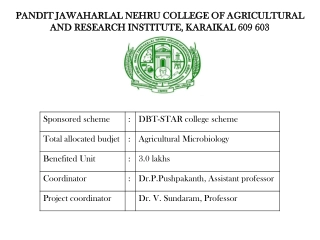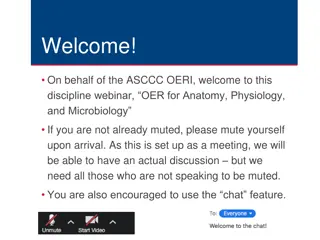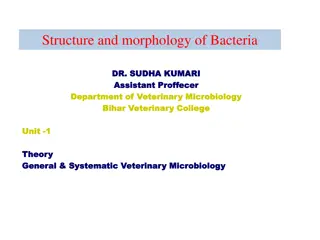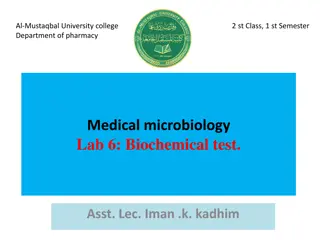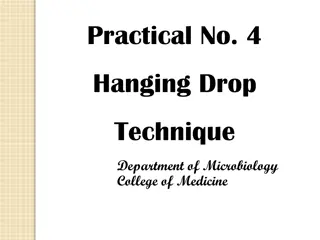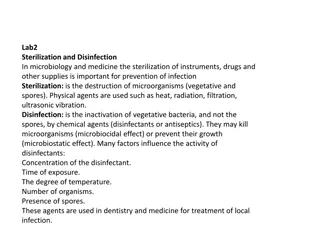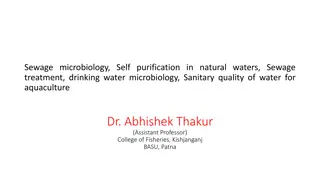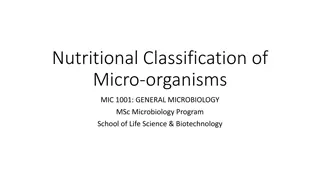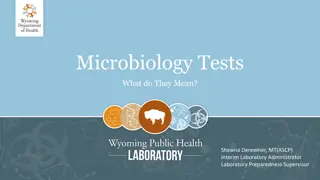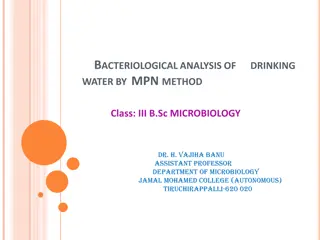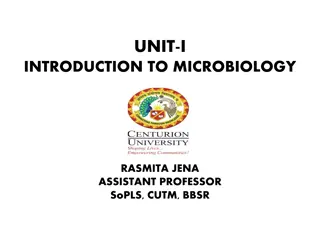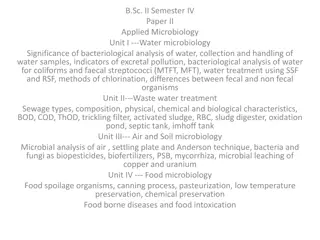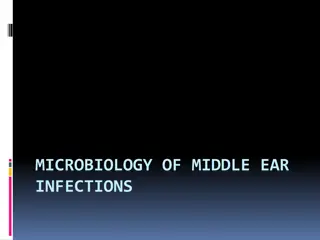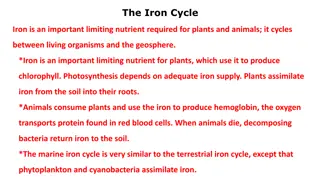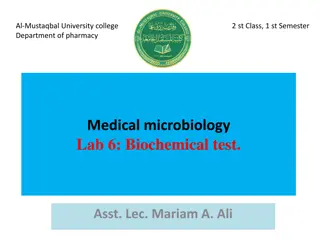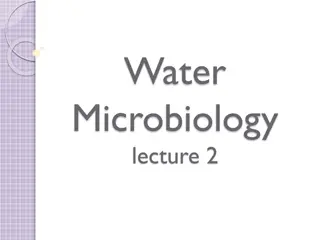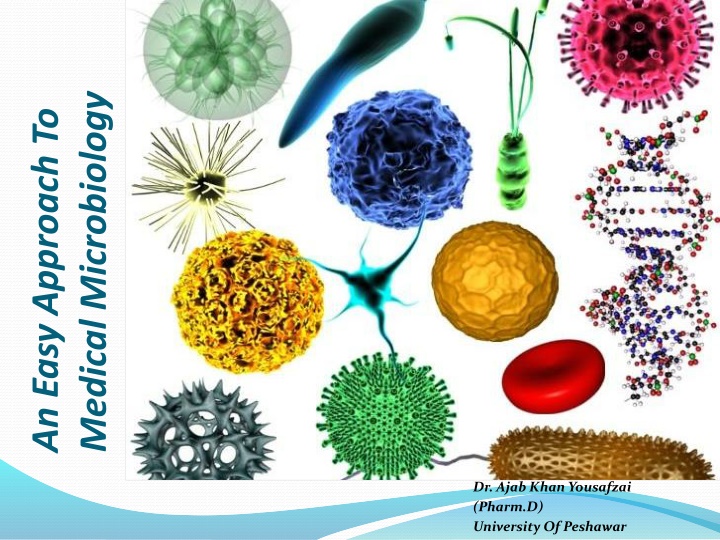
Easy Approach to Medical Microbiology: An Overview
Explore the world of microbiology with a focus on its impact on human health, nature, industrial applications, and classification of microorganisms. Learn about bacteria, their characteristics, energy sources, and temperature ranges in this comprehensive guide.
Download Presentation

Please find below an Image/Link to download the presentation.
The content on the website is provided AS IS for your information and personal use only. It may not be sold, licensed, or shared on other websites without obtaining consent from the author. If you encounter any issues during the download, it is possible that the publisher has removed the file from their server.
You are allowed to download the files provided on this website for personal or commercial use, subject to the condition that they are used lawfully. All files are the property of their respective owners.
The content on the website is provided AS IS for your information and personal use only. It may not be sold, licensed, or shared on other websites without obtaining consent from the author.
E N D
Presentation Transcript
Medical Microbiology An Easy Approach To Dr. Ajab Khan Yousafzai (Pharm.D) University Of Peshawar
Impact on Human Health Balance of Nature - food source, play a role in decomposition, help other animals digest grass (cattle, sheep, termites). Environmental provide safe drinking water; development of biodegradable products; use bacteria to clean up oil spills, etc. called bioremediation. 4. Industrial foodstuffs (beer, wine, cheese, bread), antibiotics, insulin, genetic 2. 3. engineering 5. Agricultural - research has led to healthier livestock and disease-free crops.
Microbiology The study of microbiology is the study of microorganisms, which are organisms that are invisible to the naked eye.
2 types of cells 1. Prokaryotic ("before nucleus") these are cells, but they have no internal membrane bound structures (no membrane-bound nucleus or membrane-bound organelles); includes only the bacteria. 2. Eukaryotic ("true nucleus") do have internal membrane bound structures (membrane bound nucleus and membrane-bound organelles); includes organisms such as protozoans, fungi, algae, animals, plants.
Classification of Microorganisms The 5 major groups of microorganisms: bacteria, algae, fungi, protozoa, Viruses & ?
Bacteria (singular - bacterium) (study of bacteria bacteriology) 1. prokaryotic 2. unicellular 3. size: 1/1000 the volume of a typical eukaryotic cell 4. 2 groups (discovered in 1970's) - we'll discuss more later a. Archaeobacteria - ancient bacteria b. Eubacteria - true bacteria 5. some shapes: bacillus (rod), coccus (spherical), spirillum (spiral), v ibrio (curved rod) 6. motile or nonmotile
Bacteria 7. how do they obtain their energy? a. photosynthetic autotrophs - use energy from the sun to produce their own carbohydrates for energy. b. chemosynthetic autotrophs - process inorganic molecules for energy (ex. sulfur or iron). c. heterotrophs - depend on outside sources of organic molecules (ex. carbohydrates or sugars) for energy 8. temperature extremes: -20oC to 110oC (that s really cold & really hot! freezing is OoC and boiling is 100oC)
examples of diseases?
Algae (singular - alga) - not a focus in this course. 1. eukaryotic 2. unicellular or multicellular 3. size: some microscopic, some macroscopic (ex. kelp) 4. motile or nonmotile 5. how do they obtain their energy? photosynthetic autotrophs 6. disease causing?
Fungi singular - fungus 1. eukaryotic 2. unicellular or multicellular (yeasts are unicellular, molds are multicellular) 3. nonmotile 4. how do they obtain their energy? a. heterotrophs b. Why are they ecologically important? Scavengers; they live off dead matter and thus, decompose it. 5. examples of diseases (called mycosis)? (study of fungi mycology)
Protozoa ("first animals") 1. eukaryotic 2. unicellular 3. motile or nonmotile 4. how do they obtain their energy? Heterotrophs 5. disease causing 2 examples: malaria & giardiasis (one of the don t drink the water diseases )
Viruses (study of viruses virology) 1. acellular, so not considered prokaryotic or eukaryotic; obligate intracellular parasites; when they are outside of a host cell, there is no evidence that these guys are alive. 2. basic structure of a virus - a piece of nucleic acid (RNA or DNA) enclosed by a protein coat (capsid); possess no nucleus, organelles, cell membrane, or cytoplasm. 3. size - 1/10 to 1/1000 the size of an ordinary bacterial cell. 4. nonmotile 5. examples of diseases?
Important Note We will consider a sixth group, the helminths (worms), in our study of microbiology. While most of the adult stages of these worms are macroscopic, many of them go through a microscopic stage in their life cycles (egg & larval stages). Some examples of helminths are tapeworms, hookworms, pinworms, heartworms, and Chinese liver flukes. More to come later!!
A Brief History of Microbiology
Leeuwenhoeck (lived 1632-1723) First person to use microscopes to observe microbes; as a hobby he made small handheld microscopes; he called microorganisms animalcules.
Hooke He first described cellulae (small rooms) in cork in 1665. His discovery led to the formulation of the cell theory, which states that cells are the basic organizational unit of all living things.
late 1600s Francisco Redi,s exp Living organisms arise from nonliving things (ex. maggots come from rotting meat) In the late 1600 s Francisco Redi showed that maggots developed only in meat that flies could reach to lay eggs on. Many insisted that he only disproved spontaneous generation for macroorganisms; maybe microbes were an exception.
Spallanzani Spallanzani put broth in a flask, sealed it (creating a vacuum), & then boiled it. There were no microbes in the cooled broth! Critics said he didn't disprove spontaneous generation - they said he just proved that spontaneous generation required air.
Pasteur's Experiments (1859) To offset the argument that air was necessary for spontaneous generation, Pasteur allowed the free passage of air, but prevented the entry of microbes. He boiled meat broth in a flask No microbes developed in the flask. Pasteur's success was partly due to good luck.He used meat, which contains few bacterial endospores (endospores are resistant to heat; many experiments done prior to Pasteur's used vegetable broths - plants contains many endospore-forming bacteria.)
3 things did Pasteur's experiments proved a. No living things arise by spontaneous generation. b. Microbes are everywhere - even in the air and dust c. The growth of microbes causes dead plant & animal tissue to decompose & food to spoil (this led him to develop the technique of pasteurization - he developed it to keep wine from spoiling).
(Pasteurisation) Pasteurization partial sterilization of foods at a temperature that destroys harmful microorganisms without major changes in the chemistry of the food
GENERAL SAFETY PRINCIPLES The following guidelines have been established to assist lab faculty and staff to manage potential hazards and to maintain a basic level of safety. Shown below are guidelines that establish minimum requirements for those who may use and/or work in labs
Carefully read labels before using an unfamiliar chemical Determine the potential hazards and use appropriate safety precautions before beginning any new operation. Be familiar with the location of emergency equipment such as fire alarms, fire extinguishers, emergency eyewash, and shower stations and know the appropriate emergency response procedures.
. Avoid distracting or startling other workers when they are handling hazardous materials. Always be alert to unsafe conditions and actions and call attention to them so that corrective action can be taken as quickly as possible Wear appropriate skin, eye and face protection.
HEALTH AND HYGIENE Avoid tasting or smelling chemicals. Avoid direct contact with any hazardous material. Confine long hair and loose clothing and always wear footwear that fully covers the feet. Do not mouth-pipette. Wash thoroughly with soap and water after handling chemicals or biological materials, before leaving the laboratory and before eating or drinking.
FOOD AND DRINK IN THE LABORATORY Avoid eating, drinking, smoking. Refrigerators and microwave ovens used for chemical or biological storage or other laboratory use shall not be used for food storage or preparation
HOUSEKEEPING Keep work areas (including floors) clean and uncluttered. Clean up work areas after the work is finished or at the end of each lab or workday Dispose of waste. Clean spills immediately and thoroughly. Do not block exits, emergency equipment or controls. Do not use hallways and stairwells forstorage
HAZARDOUS MATERIALS HANDLING AND STORAGE Chemical containers with missing or defaced labels should not be accepted. Chemicals shall be segregated by compatibility. Storage of hazardous materials at the lab bench or work area shall be kept to a minimum. A Hazardous material mixture shall be assumed to be as toxic as its most toxic component. Substances of unknown toxicity shall be assumed to be toxic. A warning notice must be posted near the experiment if hazardous conditions are present
WORKING ALONE In no case is working alone permitted during procedures involving highly hazardous or toxic chemicals or agents and/or dangerous equipment or environments (i.e.: anything that could cause severe injury or death).
VOLUNTEERS IN THE LAB Any volunteer conducting lab work must be provided with written instructions to complete safety training prior to working in the lab. No one under the age of 16 may work or volunteer in a lab.
GENERAL PROPERTIES OF VIRUSES Viruses contain either DNA or RNA as their genetic material, but not both. This nucleic acid usually has unique chemical and/or physical features which makes it distinguishable from human nucleic acid Viral nucleic acid is enclosed in a capsid made up of protein subunits called protomeres. Some species of viruses have a membrane, the envelope, surrounding the capsid; other species do not have an envelope, i.e., they are naked. Enveloped viruses have glyco-protein spikes arising from their envelope. These spikes have enzymatic, absorptive, hemagglutinating and/or antigenic activity.
Shapes of viruses The morphology of a virus is determined by the arrangement of the protomeres.
Properties All viruses undergo a replication cycle in their human host cell consisting of adsorption, penetration, uncoating, nucleic acid replication, maturation and release stages. During the viral replication cycle, an accumulation of mature viruses, incomplete viruses and viral parts occurs within the cell. The size, shape, location and chemical properties of the inclusion body are used by the pathologist to diagnose viral infectious disease.
Properties In general, all DNA-containing viruses replicate in the host cell nucleus. The exceptions to the rule are the poxviruses. In general, all RNA-containing viruses replicate in the host cell cytoplasm. The exceptions to the rule are the retroviruses (any of a group of viruses that contain two single-strand linear RNA molecules) and the orthomyxoviruses*. (*GROUP OF INFLUENZA VIRUSES)
Need of microbiology to a nurse A nurse needs to know: What are effective ways of preventing infections? What the signs of infections are (eg. What are the signs of bacterial infections?) How normal flora contribute to health?
Need of microbiology to a nurse make an idea about spreading of infection. know about the surfaces which are susceptible to infectious agent. keep instruments aseptic. recoganise symptoms of an infection. to take care of an open wound. recoganise the type of infection at its early stage.
TYPES OF BACTERIA ON NUTRITION BASES !
Autotrophic Bacteria These are bacteria which are able to synthesize their own organic food from inorganic substances. They use carbon dioxide for obtaining carbon and utilise hydrogen sulphide (H2S) or ammonia (NH3) or hydrogen (H2) as the source of hydrogen to reduce carbon. These bacteria can be distinguished further into two types as follows:
Photoautotrophic Bacteria The photoautotrophic bacteria possess photosynthetic pigments with in their cells and utilize solar energy. The bacterial photosynthesis is different from that of green plants since here water is not used as a hydrogen donor. Hence oxygen is not released as a byproduct. For this reason, the process is described as anoxygenic photosynthesis.
Chemosynthetic Bacteria These are bacteria which manufacture organic compounds from inorganic raw materials utilizing energy liberated from the oxidation of inorganic substances. Following are the common types of chemo autotrophic bacteria. 1. Nitrifying bacteria which derive energy by oxidizing ammonia into nitrates. Eg: Nitrosomonas, Nitrobacter. 2. Sulphur bacteria which derive energy by oxidising hydrogen sulphide to sulphur. Eg: Thiobacillus, Beggiatoa. 3. Iron Bacteria which derive energy by oxidizing ferrous ions into ferric form. Eg: Ferrobacillus, Gallionella.
Heterotrophic Bacteria These are bacteria which are unable to manufacture their own organic food and hence are dependent on external source. These bacteria can be distinguished into three groups as follows
Saprophytic Bacteria These bacteria obtain their nutritional requirements from dead organic matter. They breakdown the complex organic matter into simple soluble form by secreting exogenous enzymes.
Symbiotic Bacteria These are bacteria which live in a mutually beneficial association with other organisms. Such bacteria derive the essential nutrients from their host organisms and in that process help the host through some of their biological activities. The most familiar example of symbiotic bacteria are the nitrogen fixing bacteria found in the root nodules of leguminous (pod) plants. Bacteria such as Rhizobium and Pseudomonas reside in the root nodules and reduce atmospheric nitrogen directly to ammonia. This becomes the source of nitrogen for the host plants. The plants in return provide bacteria with nutrients and protection.
E.Coli in Human The bacteria found in the human alimentary canal Escherichia coli are nonpathogenic. These bacteria check the growth of harmful putrefying bacteria. In addition, these bacteria release vitamins K and B12 which are necessary for blood components. The human host provides shelter and food for these bacteria.
Parasitic Bacteria These are bacteria which occur in the body of animals and plants, obtaining their organic food from there. Most of these bacteria are pathogenic, causing serious diseases in the host organisms either by exploiting them or by releasing poisonous secretions called toxins.
Shape of Bacteria Cocci spherical/ oval shaped major groups Bacilli rod shaped Vibrios comma shaped Spirilla rigid spiral forms Spirochetes flexible spiral forms Actinomycetes branching filamentous bacteria Mycoplasmas lack cell wall

